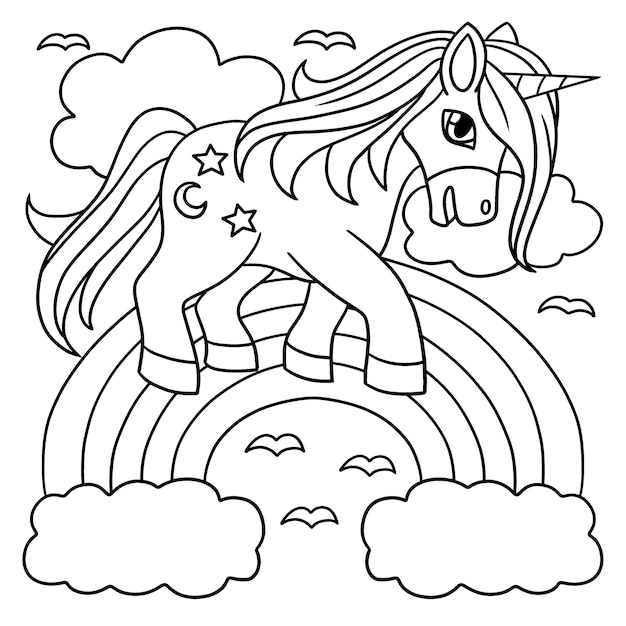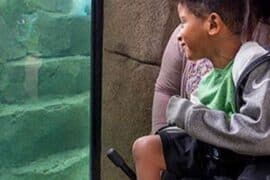A Joyful Guide for Parents: Colouring the Rainbow with Your Kids
Hello there, wonderful parents! Are you ready to dive into a world of colors and smiles with your little ones? Colouring the rainbow is not just a leisure activity; it’s a vibrant journey that can contribute to your child’s development in more ways than one! Let’s unfold the spectrum of possibilities together in this delightful guide to colouring the rainbow.
Why Colouring a Rainbow is a Magical Experience
Before we jump into the ‘how-to’, let’s take a moment to appreciate why colouring a rainbow with your children is a truly magical experience. It’s not just about keeping them occupied (although that is a fabulous bonus!). It’s about exploring creativity, understanding color theory, developing fine motor skills, and bonding as a family. So, get ready for some fun!
Materials You Will Need
First things first, let’s gather our rainbow artillery. You won’t need a pot of gold, but here are some must-haves for your coloring adventure:
- Coloured pencils, crayons, or markers
- Colouring sheets with rainbow outlines (printable options are great!)
- Blank paper for freehand drawing
- An assortment of rainbow-colored paper for crafts
- Glitter, stickers, and other decorative items to glam up your rainbow
All set with the materials? Marvelous! Let’s march ahead!
Step-By-Step: Drawing and Colouring the Rainbow
Now that we’re all geared up, it’s time to create some splashes of joy. Here’s a simple step-by-step guide to help you and your kids draw and colour your own rainbows:
- Set the Scene: Find a comfortable and well-lit space where you can spread out your materials and work without interruptions.
- Draw the Outline: Guide your kiddos to draw a large arc for the rainbow’s outer edge, followed by concentric arcs inside to represent the different color bands. Remember, it doesn’t have to be perfect. It’s all about having fun!
- Select Your Colors: Discuss the order of the rainbow colors with your children. Starting from the outermost arc, the sequence is red, orange, yellow, green, blue, indigo, and violet.
- Begin Colouring: Encourage your children to color within the lines, or go wild with their imagination. This is a great opportunity to talk about light and color, how rainbows form, and why the sky plays such a special role in this natural wonder.
The Meaning Behind the Colors
Magic unfolds as you add each stripe to your rainbow. Did you know every hue has a story and a meaning? For example, red stands for strength and passion, while blue represents calm and wisdom. Engage your little ones in a conversation about what each color makes them feel and think about. It’s a delightful way to infuse emotion and depth into their creative expression.
As you continue to explore each band of color, remember that this activity is more than just keeping within the lines on a page. It’s a chance for you to nurture your child’s curiosity, help them develop vital coordination skills, and enhance their understanding of the world in a fun and interactive setting.

5 Things Parents Should Know in Preparing for Colouring the Rainbow
Colouring the rainbow is an activity that brings joy to kids and adults alike. To ensure the best possible experience, parents should consider the following when preparing for this creative adventure:
- Create a Positive Environment: Setting the tone for a productive and happy colouring session starts with the environment. A well-organized, clean, and comfortable space encourages kids to express themselves freely and reduces potential frustrations.
- Quality Supplies Matter: While the enthusiasm to color is key, having quality materials can significantly enhance the experience. Invest in good-quality coloring tools and paper which can handle the rigors of little hands and big imaginations!
- Embrace the Educational Aspect: Use this chance to teach children about colors, light, weather science, and art. Fun facts about rainbows and how they occur will deepen their appreciation for the beauty of nature and the science behind it.
- Patience is a Virtue: When little hands are at work, perfection is not the goal; expression is. They may go outside the lines or mix colors in ways you wouldn’t expect. Celebrate their creativity rather than correcting their ‘mistakes’.
- Incorporate Variety: Along with traditional coloring pages, provide different mediums and textures for your kids to experiment with. This could include watercolor paints, finger paints, and even digital coloring apps for tech-savvy tykes.
Prepare to be amazed by how these preparations can turn a simple coloring session into a memorable and learning-rich experience for your children!
Crafting Beyond the Colouring Page
After your children have mastered coloring within the lines (or have decided that outside the lines is much more interesting), why not take the rainbow theme even further with some fun crafts? Here are a few ideas:
- Build a 3D paper rainbow: Use strips of colored paper and cotton balls to create a fluffy, three-dimensional rainbow that can stand on its own or be hung up as room decor.
- Make rainbow bracelets: With a bit of string and multi-colored beads, kids can craft their very own wearable rainbows that showcase their artistic flair.
- Create a rainbow collage: Gather up old magazines and let children rip out pages with their desired colors, arranging their cuttings into a big, beautiful collage rainbow.
These crafts enhance fine motor skills, pattern recognition, and the understanding of colors and blending. Plus, they’re a blast to do!
Colorful Conversation Starters
While your children’s hands are busy with crayons and paint, let their minds wander with colorful conversation starters. Ask about the colors they’re using and what they associate with each color. This can be an enlightening exchange that allows you to understand your child’s perception of the world around them.
Moreover, discussing color symbolism from different cultures makes for an enriching cultural lesson. A rainbow is universal, but the stories people tell about them can be wonderfully diverse!
Integrating Sensory Play
Colouring the rainbow isn’t limited to just visual fun; you can also incorporate sensory play to enhance the tactile experience. Use materials like textured paper, sandpaper, or fabric to color on and discuss how different surfaces affect the way the color looks and feels. Play with scented markers for an olfactory twist, or add a blindfold to let your kids rely on their sense of touch to create.
Adding these elements creates a comprehensive experience that can cater to various learning styles and preferences, ensuring that every child gets the most out of this colorful journey.
For more great articles please see here. For more information see here
Disclaimer
The articles available via our website provide general information only and we strongly urge readers to exercise caution and conduct their own thorough research and fact-checking. The information presented should not be taken as absolute truth, and, to the maximum extent permitted by law, we will not be held liable for any inaccuracies or errors in the content. It is essential for individuals to independently verify and validate the information before making any decisions or taking any actions based on the articles.




